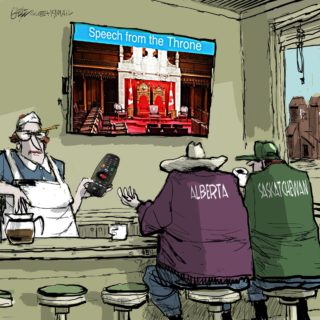Steven Chase reports on the state of the controversial $15 billion Canadian arms sale to Saudi Arabia in the light of the latter’s recent execution of 46 prisoners, including a Shia cleric who was revered in Iran. In a further article on January 6 entitled Armoured vehicles in Saudi deal will pack lethal punch Chase and Daniel Leblanc explore the capabilities of the vehicles included in the deal.
Appropriate Subject Area(s):
Social studies, current events, history
Key Question to Explore:
- Why are rights groups concerned about Canada’s current arms deal with Saudi Arabia?
New Terminology:
Riyadh, Saudis, abysmal, Sunnis, Sheik Nimr-al-Nimr
Materials Needed:
Globe article, the Internet
Introduction to lesson and task:
Canada’s relationship with Saudi Arabia is similar to that of the United States. With Israel, Saudi Arabia remains one of the West’s most important allies in the Middle East. Until they were closed in 2003, the United States operated several military air bases in the country, but as the US and its allies sold increasing amounts of military equipment—aircraft, etc—to the Saudis, the latter became better able to defend themselves and their interests from their traditional enemies, especially Iran.
Saudi Arabia’s oil reserves are among the largest in the world and the oil is not only of very high quality, it is also very inexpensive to extract. Protection of this source of oil has been the primary interest of the West for more than half a century.
Canada is one of many nations that sells arms to the Saudis and at $15 billion the current arms deal is one of the largest the two countries have ever undertaken. General Dynamics Land Systems, located in London, Ontario, is set to produce and deliver a fleet of Light Armoured Vehicles (LAVs) and to the consternation of human rights groups at home and abroad, the new Liberal government will not block the deal which was negotiated under the previous Conservative regime. Prime Minister, Justin Trudeau, has claimed that the deal merely involves relatively innocuous “jeeps.”
Critics argue that LAVs are in fact, fitted with lethal weapons and that Canada should not be trading with a country that has such an “abysmal” human rights record. Saudi Arabia is governed by an absolute monarch and its justice system is based on Sharia Law, which is based on Islamic religious beliefs. Accordingly, religious dissidents can be and often are flogged or executed by public beheadings or firing squads. Often executions are followed by crucifixions. Sunnis represent about 90% of the total Saudi population, with the minority being Shia Muslims. The rivalry between the two sects remains the primary dividing issue among countries in the region. Iran, for example, an enemy of Saudi Arabia, is predominantly Shia.
The recent execution of 47 people, including a dissident Shia cleric who was highly respected in Iran, has focused rights groups’ attention on the current Canadian arms deal. In this lesson, students will learn some basic facts about Saudi Arabia and will develop an informed position on Canada’s sale of arms to that country.
Action (lesson plan and task):
Students will engage in a short class discussion about Saudi Arabia before breaking into groups to work on the following assignment.
These questions or prompts could help spark the class discussion:
- Which country recently carried out a public execution by beheading 47 people for dissenting with their government and/or because they held objectionable religious views? (See above)
- What can you tell us about Saudi Arabia from your knowledge of that country?
- Are you aware of Canada’s role in selling arms to the Saudis? If so, how much is the current arms deal worth? ($15 billion).
- As a woman in Saudi Arabia, would you be able to put on a summer dress and drive bareheaded to a local liquor store and purchase beer? (No, for three reasons: 1) women are not allowed to drive, 2) they must wear head covering in public and, 3) alcohol sales, possession and consumption is illegal and punishable by flogging or worse)
Assignment:
Using the attached article from the Globe and Mail, as well as Wikipedia or your own or your teacher’s preferred Internet sources, answer the following questions and complete the following tasks. Be prepared for a member of your group to present a brief oral report on your group’s work.
First, read the Globe articles aloud or privately.
- Which government helped organize this arms deal?
- How many jobs will the arms deal create for Canadians?
- What is a LAV? Why might Canada have modern LAVs? (consider our recent military deployments)
- What kind of weapons would the LAV include? Who are some of the subcontractors on this deal?
- What is “Project Ploughshares?”
Using the Internet:
- Describe, briefly, the way Saudi Arabia is governed—how its leaders are chosen, what kind of justice system is used, the role of ruling families in its history.
- What kinds of offences are punishable by death in Saudi Arabia?
- What percentage of its GDP does Saudi Arabia spend on its military?
- Saudi Arabia is currently engaged in a military conflict in the region—with whom and for what reason is it engaged?
- Would you describe the LAVs as “jeeps”? Why or why not?
- Given what you now know about Saudi Arabia, do you think Canada should be involved in providing it with military hardware? Give reasons.
- Bonus question: What does the movie “Lawrence of Arabia” have to do with the way Saudi Arabia became its own country?
Allow enough time for groups to present oral reports on their collaborative work.
Consolidation of Learning:
- Students report and explain their work to the whole class.
Success Criteria:
- Students can develop an informed opinion on whether or not Canada ought to be selling arms to Saudi Arabia.
Confirming Activity:
- Consider having students follow the story in the press, especially as it relates to anti-Saudi demonstrations in Iran.

